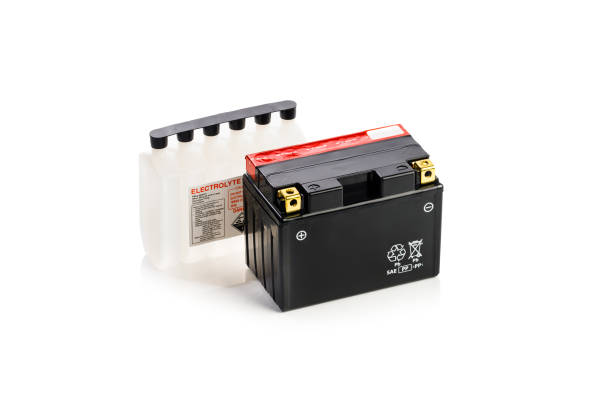A dry battery also called a dry cell battery, is one of the most widely used types of electrochemical batteries. AAA batteries, AA batteries, button batteries, 9-volt or pocket batteries, etc., are all dry batteries.
It can also be called a dry battery. Although the term battery is specific to designate. A set of electrochemical cells is connected in series and batteries only have one cell. Batteries are often used in devices with high electrical consumption. Where the batteries fall short.
Dry cells are characterized and differ from other types of cells and batteries in that the electrolytes. Whose reaction generates the electricity supplied by the cell. Is powdered or in a paste with low liquid content. In contrast, wet cell batteries carry the electrolytes in a liquid.
Composition and structure of a dry cell
All dry cell batteries have a few basic components. In the center is a bar called the cathode. Which is usually made of carbon. This bar is coated with an aqueous electrolyte paste.
Electrolyte paste is made from different chemicals. Such as NH 4 Cl (ammonium chloride) or MnO 2 (manganese dioxide). It depends on the type of battery (alkaline, zinc-carbon, etc).
Following the electrolyte paste is a layer of paper, cardboard, or synthetic material that separates the outermost layer. Which is a metal cylinder called the anode, usually made of zinc.
The prices of dry batteries start from Rs. 5,620 in Pakistan. The common products available in Pakistan are HANKOOK MF-42B19L dry car battery, HANKOOK MF-42B19R dry car battery for vehicles up to 600 to 1000, HANKOOK MF-55559 Din series dry car battery for Mercedes, BMW, Audi, and the HANKOOK MF-90D26L automotive dry battery.
Types of dry batteries
The most common types of dry cell batteries are the zinc-carbon battery and the alkaline battery. The zinc-carbon battery is cheaper but has a shorter life than the alkaline battery. Another type is the silver cathode battery, which is rarely used today.
- Zinc-carbon battery: the cathode is a carbon barrel surrounded by a compacted mixture of carbon and manganese oxide (MnO 2 ). The anode is a zinc shell containing an aqueous paste of ammonium chloride (NH 4 Cl) and zinc chloride (ZnCl 2 ).
- Alkaline battery: the cathode mixture is made up of manganese oxide and carbon. At the anode, there is a dispersion of zinc powder in a gel containing potassium hydroxide. It has not been possible to manufacture rechargeable alkaline batteries.
Nickel-Cadmium (Ni-Cd) batteries, Nickel-Metal Hydride (Ni-MH) batteries, and Lithium-Ion (Li-Ion) batteries are rechargeable dry cell batteries. It has not been possible to manufacture rechargeable alkaline batteries.
Lithium-ion batteries have become popular in the form of batteries for gadgets and personal devices, such as mobile phones, due to their high performance, low memory effect (they can be recharged many times without losing efficiency), lightweight and small size.
Ni-Cd and Ni-MH batteries have become popular replacements for AAA and AA batteries when a rechargeable source is desired. Ni-MH batteries offer many advantages over Ni-Cd batteries such as lower cost, higher charging capacity, less memory effect, and less pollution, but they have a higher self-discharge rate than Ni-Cd batteries (about 30% ).
Operation of a dry cell
A dry battery has two terminals, one is the positive pole and one is the negative pole. When a load is connected to the battery terminals, a chemical reaction takes place between the anode electrolytes and the cathode electrolytes.
The reaction generates a flow of electrons (electric current) that is conducted through a collector to the circuit of the device that you have connected to the battery.
Each anode-electrolyte-cathode group is called a cell or electrochemical cell. Several of these cells can be connected within the same battery or by connecting several cells in series to produce a higher voltage.
The chemical reaction that occurs in each cell consumes the reactants until they are exhausted, at which point the battery will no longer produce electrical energy.
Rechargeable cells and batteries can be connected to a special device that reverses the chemical reaction allowing the battery to work again.
Disposal of exhausted batteries
The chemical products used to manufacture batteries are highly polluting and harmful to the environment. For this reason, they must always be taken to the appropriate recycling. And waste management center. They should never be thrown out with the rest of the trash.
To minimize the environmental impact, it is also advisable to use rechargeable batteries, in addition to the economic savings they entail.




